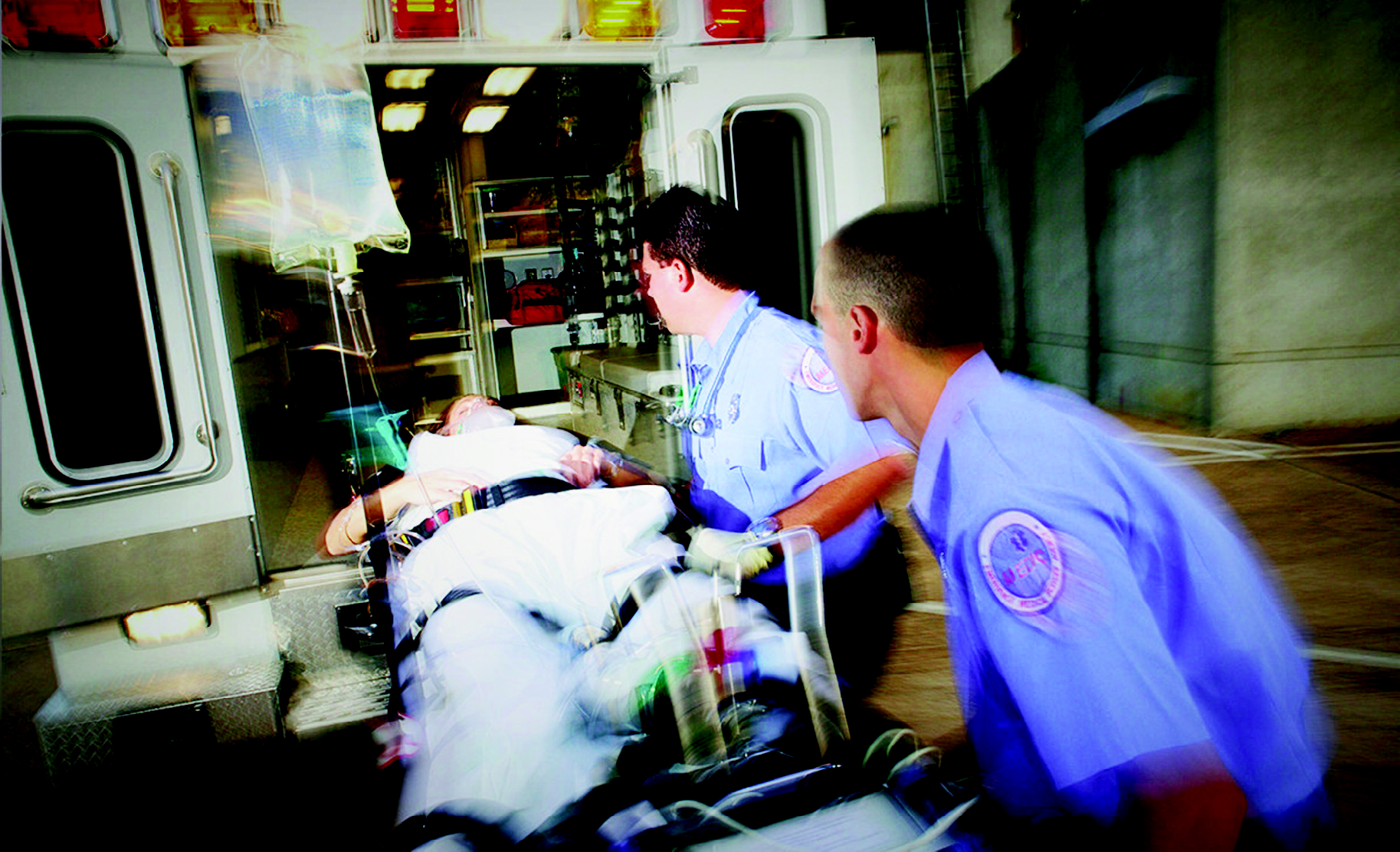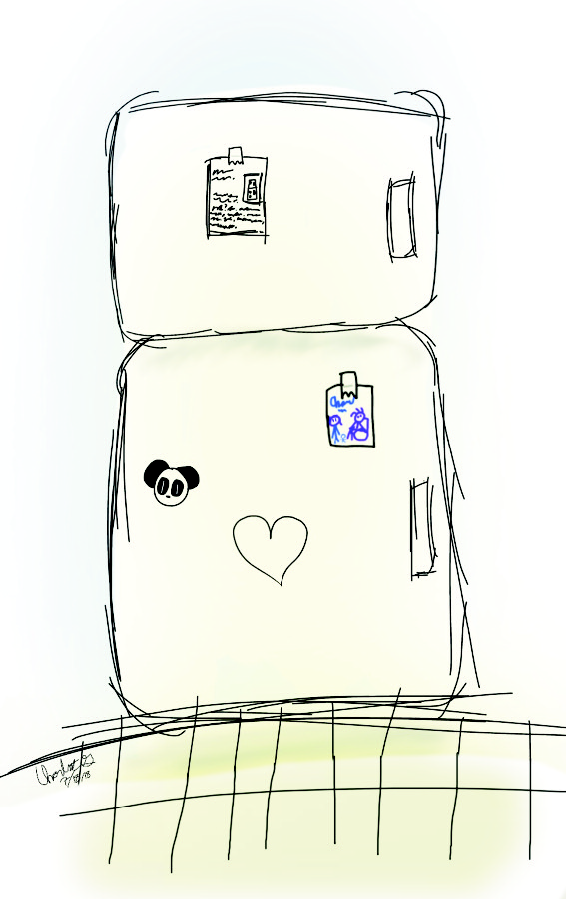BY LAURA GEORGE
Scenario: Your child has a rare disorder and you have five minutes to evacuate your home due to a chemical leak. // The police have directed you to shelter at a location nearby. // Your child is in a wheelchair and has a developmental delayed learning disorder along with eating issues. // What is your next step?

Did I pause your heart? Good! Like it or not, in a disaster, you are your child's personal first responder. You are the first person that first responders will go to and ask questions relating to those you give care to and care about in a disaster. How did you earn this title and what does it take to be successful in this role?
You earned it because you spend 365 days / 7 days a week / 24 hours a day with your child, and your knowledge is so vast that you usually teach the medical professionals working with them about the complications of their health issues they have that you have not already told the office / hospital front desk. Their ability to live depends on you and what you choose to do. This is the same way I earned it. My husband (deceased) received care for six years when he had paralysis and three rare, life-threatening spinal neurological disorders. When I was pregnant with our daughter, I had to choose between him and her with an impending hurricane. The scenario has been repeated many times though now, my child is trying to beat her own rare disorder called PANDAS (Pediatric Autoimmune Neuropsychiatric Disorder Associated with Streptococcal Infection). So, let's walk you through what it takes to be a great Emergency Prepared Caregiver.
Create your emergency preparedness kit. Of course, yours has been created over the past several years. If it has not, then tear out this page from the magazine, put it up on the refrigerator to use as a handy guide to create the kit.
Paperwork: In a bright colored plastic envelope or folder, place medical paperwork such as foster parenting papers, insurance, explanations or hand-outs of the rare disorder, phone numbers to your child's medical team, backup contacts, suppliers, and other documentation relating to the child. Bonus points are given if their birth certificate, social security number, and model/serial numbers for your child's equipment are also included. (The latter numbers make it much easier for companies to regenerate the equipment quickly.)
Medical Hardware/ Software: These are all the tools needed to make your child's life easier to live on a daily basis. This could range from catheters, to adaptive clothing, to special silverware, communication tools, battery chargers, leg braces and whatever else your child might need. Having a medic alert bracelet on them with their condition and your phone number always helps others if the parent is not around. Medicine concerns (such allergies) might also be included on the bracelet.
Understand that there are two parts to the topic of medication. The first is a sheet with the name of the medication, what it is for, the amount, how often taken and the prescribing doctor. Pharmacies and their contact information should also be included. The second part is having a start set of medication. Some insurance companies will allow for a one-time fill on a week's worth prescription to have on hand for emergencies. Others will allow for a one-month prescription refill when there's a disaster warning such as a hurricane. Check with your insurance company and doctor to set this up. Use this same process for oxygen tanks. When oxygen tanks are used, take the time to have your local fire department conduct a wellness visit to your home. Have them learn about your child's condition, its particulars, and how the equipment and supplies work. This also places you directly in front of them to remember when a disaster occurs that might require evacuation.
Food: If your child has life-threatening food issues of any kind, make sure this is also noted in your paperwork. Noting the need of an Epipen or other needlegiven medications in the emergency preparedness kit can be a life saver, especially if the caregiver is not nearby or able to speak. Shelf-ready food is perfect to add to the kit, consider also adding medical food supplements if you can. Refrigerated food can be tricky to address but it is not impossible. Saving the ice packs that come with the medication and their thermal boxes are great aids, as well as rotating layers of wet paper toweling with aluminum foil. Diabetic? Get an insulin cooling case that acts as a reusable evaporative medication cooler so electricity for it is also not an issue. Don't forget the water! The rule is one gallon per person per day. Depending on how severe the needs are of your child consider increasing that to at least two gallons of water for them per day. Overall, make sure you have enough water for at least 10-14 days for your child.
Emotional Well Being/ Mental Health: Any massive weather event or disaster can be stressful. With children, and especially those with developmental disability disorders, mental health or emotional concerns, these moments can be frightening. The calmer you are in addressing the disaster, the calmer they will be. Try to find something they can do to help prepare which, in turn, will reduce the anxiety—and give them an opportunity to help mom and dad address the event. Some good anxiety reducers are stuffed animals, technology, or their favorite entertainment items (such as a flashlight) that can be put into an emergency preparedness kit that they created for themselves. Make sure to include any medications or favorite foods that would also help to calm them. While their favorite service dog cannot be packed, it can also be included in the preparations. Make sure there is a copy of the service dog certification paperwork with your child's paperwork, what its purpose is, and 10 to 14 days' worth of food and water. Dogs can be anxious too, so make sure to include its favorite toys, blankets and service jacket. Remember having calm and accessible communication items easily available for the child will make it easy for other first responders to help your child if for some reason you are unable to do so.
Sheltering/ Evacuation: When evacuating, have three places to go to for evacuation. The first and best place to take shelter is at the home. Include the visiting nursing company in your plans and get included on their plans as well. Make sure that neighbors, family and friends are also familiar with your emergency preparedness kit and plans. If the nursing company does not have a plan, then continue with yours and push them to create one. The second place for shelter would be where you are being told to evacuate to or another trusted person's home. The third sheltering place is another easily accessible location when it is realized that the first two are unavailable, such as a nearby church or hotel. Additional bonus points will be given if the local health care liaison at the health department is called, asking for their knowledge community sheltering.
CONCLUSION Is your head a bit overwhelmed? That's great! I'm happy because I've challenged you to think about this topic. This kit will not be put together overnight. Instead, keep this article nearby to use as a checklist, work with it, and feel free to add things that may not be mentioned here but being your child's caregiver, you know must be included for them to live. How did I come up with so many things that are outside-the-box and never spoken about in emergency preparedness?
I briefly mentioned my husband and daughter's concerns earlier. The rest of the story is that when I was eight months pregnant and my husband was six months in recovery from an injury, I found myself in the position of having to choose between their lives, because there were zero community support systems in place to keep us safe from a hurricane. I immediately started meeting with county officials and attended meetings addressing emergency management design, making it known that caregivers of loved ones with special needs had to be included in emergency planning. For the past 12 years, I have published, presented and created documentation for local, county, state, regional and national committees discussing emergency preparedness from a caregiver's point of view. I now call myself an Emergency Management Disability Liaison and love challenging questions. When I give presentations, I carry many personal stories with me on a lanyard made of pins that I use to help get the idea across that there are different types of disabilities and no two caregivers have the same challenges.•

COLD COMFORT: The author's daughter Charlotte, who has Pediatric Autoimmune Neuropsychiatric Disorder Associated with Streptococcal Infection (PANDAS), contributed this drawing of their refrigerator with emergency preparedness paperwork posted on it.
ABOUT THE AUTHOR: DOCS FOR DOCS: A sample BioMed resumé, which contains vital data for emergency and medical personel, such as insurance, explanations of the rare disorder, phone numbers to your child's medical team, backup contacts, suppliers, and other documentation that can reduce stree and improve outcomes. Laura George is the Emergency Management Disability Liaison, National Center for Independent Living- Emergency Preparedness (NCIL-EP) Committee. She has spent the last 13 years volunteering her time, as well as consulting, sharing and presenting on the idea emergency design needs to include everyone and not just be taught to everyone. She has presented and sat on committees before local, county, state, regional/national organizations from a caregiver's point of view. She is an author, presenter and caregiver.